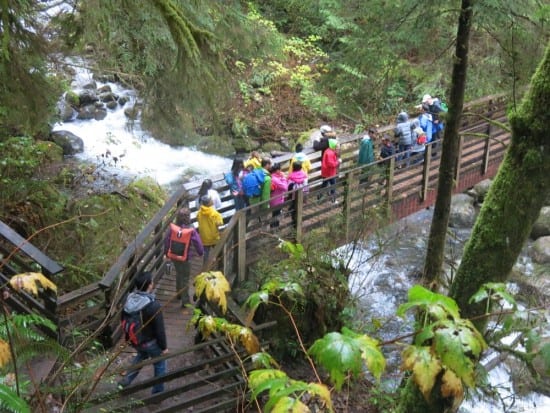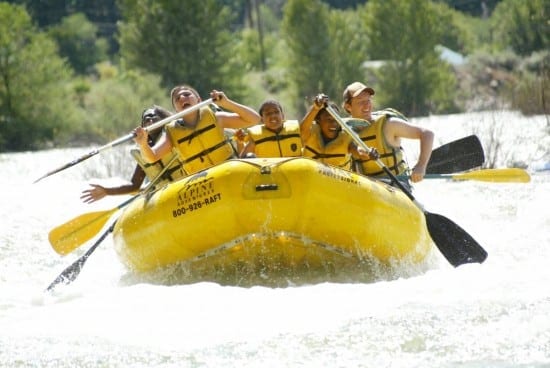
Seattle ICO: Helping City Kids Access the Great Outdoors
We (“we” being Kars4Kids) gave out another small grant, this time to Seattle Inspiring Connections Outdoors (ICO), which began as part of the Seattle Group of the Sierra Club in 1991, and is now among the most lively of ICO programs in the National Sierra Club. Think about it: living in a beautiful place like Seattle, and never getting to see much more than its urban center. That is what Seattle ICO aims to correct because it just shouldn’t be like this—kids should have a chance to see trees and flowers and birds, the wondrousness of mountains and natural streams. It’s important to have a sense of the gift of the great out-of-doors.

That is the important work that Seattle ICO is doing. This organization is taking kids on trips in the wild and teaching them survival skills. ICO provides food, transportation, and trained volunteers to students from select Seattle elementary, middle, and high schools. The students are a multicultural mix of diverse ethnic backgrounds and some of them have special needs, too. ICO helps these students get excited about the world they live in, and of course, there’s a lot of mentoring going on, which is something Kars4Kids can always get behind, mentoring being our main mission.
We spoke to Kirsten Gardner, Chair of Seattle ICO, to find out more about the work of this wonderfully driven all-volunteer organization.
Kars4Kids: Tell us about the work you do with the special needs class at Franklin High School. How does environmental education help children with special needs? What kind of outings do you take with these children?
Kirsten Gardner: Franklin has had a very dedicated teacher in the special education department who really goes out of her way to recruit students for these trips which they may not sign up for otherwise. Trying new things is often a cause of fear or anxiety for anyone, and this can be compounded when there is a learning disability involved, but the satisfaction and pride is immense. It also gives the students an opportunity to succeed in an environment outside of school, in nature, which is forever the great equalizer. A student who can’t sit still in class for three minutes might find a healthy outlet for their energy on a hike that others find challenging.
We just had a mountain biking trip for a group from Franklin at the end of January. Most of the kids had never been on a bike before but they all brought great attitudes and a willingness to learn. It was a really successful and fun day.
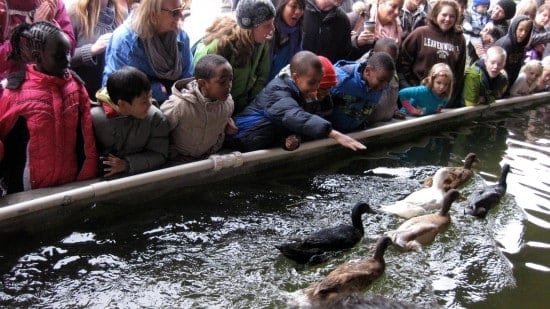
Kars4Kids: At one area elementary school, you’re serving both local and homeless children. Do you see any difference in how the homeless children relate to the outings you arrange for them? Are they more resourceful? Is there a special focus for these trips that supports these children?
Kirsten Gardner: This is a tough question. As a volunteer leader that sees the students only once every month or so, you are never sure what their home situation is like and how that might be affecting their attitude or behavior on the day of an outing. So we do what we can to ensure success for everyone. We provide a full breakfast at the school when we meet the students in the morning, a healthy lunch and plenty of snacks throughout the day. And we completely outfit the students from head to toe with warm and weather appropriate gear: hiking boots, rain pants, ski gloves—everything they need. The idea is that if a child shows up hungry and isn’t dressed for the expected weather (which happens frequently and doesn’t denote homelessness or a challenging home environment—not everyone has hiking boots or warm jackets)—they can still come with us and have a great day.
Extra food at the end of the trip is given to the students to take home. And in some cases if we are aware that the need is there, we put food items aside for specific students.
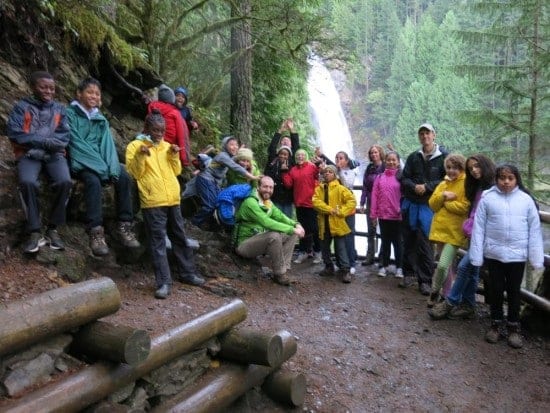
Seattle ICO Trips A Privilege
Kar4Kids: We’re aware that some school children are chosen for ICO trips as a way of giving them an incentive toward better academic performance, behavior, and so forth. Does it work? Do children in Seattle know about ICO and dream about going on these field trips?
Kirsten Gardner: Each school or agency partner has their own way of promoting the trip to the students but yes, the outings are viewed as being pretty fun and teachers report hearing students talk about them for weeks afterwards. Most of the schools do promote the ICO trips as a privilege that should be earned—particularly for participation in some of the highly desirable overnight camping trips or snow tubing outings. Sometimes this participation is based on academics and sometimes there is a service element to being allowed to participate. In most cases the agency contact (teacher) who works most closely with that school’s ICO team has the final say in participation and students are occasionally prevented from coming with us due to behaviors or disciplinary action in school. But it is a fine line because sometimes those are the individuals that need or benefit from this type of experience the most.
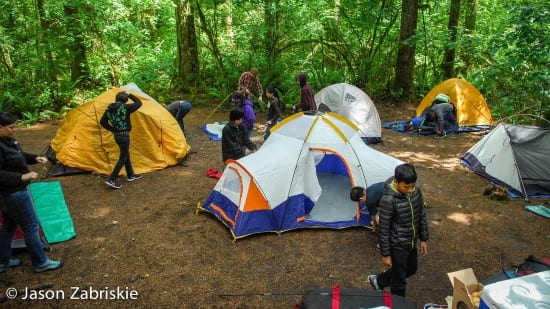
Kars4Kids: What are some of the skills children learn on the ICO field trips? How many times is a student from one of the schools you serve, likely to take part in an ICO event?
Kirsten Gardner: Some students go on every single fieldtrip, and start in 3rd grade at a school like Baily Gatzert and then continue on to a Middle School like Washington which has a ICO trips for 6-8th graders. We teach all students about Leave No Trace and how to generally respect the environment and enjoy our time in nature responsibly. Specific trips teach skills like mountain biking, kayaking or canoeing, tide pooling and basic marine biology, bird-watching and identification, and snow-shoeing. On overnight trips students are taught how to assemble their own tents and must work together in teams to do so. They also help with meal preparation and cleanup on the longer trips. We try to turn situations where we hear a lot of ‘I can’t’ into opportunities for the students to teach and help each other with a specific task, like putting on snow shoes.
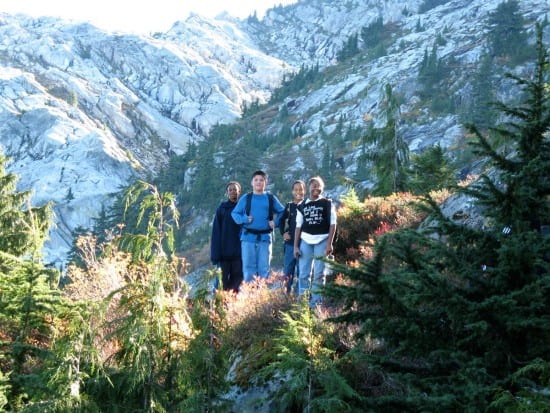
Kars4Kids: One of the schools you serve, Tukwila Elementary School, has a diverse student population with a total of 20 languages other than English. Do most of the children speak English? If not, how do you manage to communicate with the children, especially if you’re working with a multinational group with more than one native tongue?
Kirsten Gardner: Most students attending our trips speak some English if they aren’t fully fluent though occasionally we’ll have a new student from a refugee family who is still learning. Oftentimes these students will sign up for the trip with peers—sometimes relatives, who can translate for them. We play ice breaker and name games at the beginning of each trip and I usually try to play a game in the van while driving where we see how many different languages we can say a certain word in—hello, peace, thank you, etc. It helps us learn more about each other while also celebrating how diverse our student populations are.
Additionally, many of our leaders are bilingual. Off the top of my head I know we have volunteers leaders who speak Spanish, Arabic, French, Mandarin, Vietnamese and Amharic.
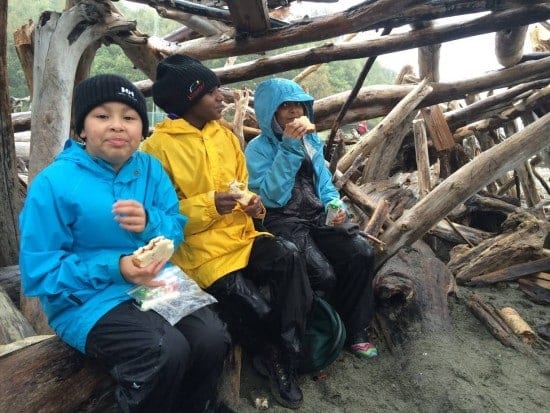
Kars4Kids: Are Seattle ICO trips one-day affairs, or are some of them longer?
Kirsten Gardner: Most are held on Saturdays but each school team does one or sometimes two (if they have the budget for it) overnight trips per year that involve camping or backpacking.
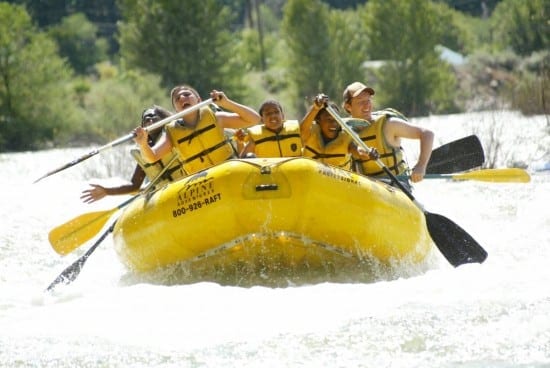
Kars4Kids: What makes you know that you’re having a positive impact on Seattle youth? Can you describe a satisfying moment with one of the children from a Seattle ICO field trip?

Kirsten Gardner: There are a lot of awesome moments on these trips. Just giving kids the opportunity to play outside is immensely satisfying when you know that they don’t regularly have recess or gym class or any opportunity to move and be freely active. But my favorite moment was on the drive home from an overnight trip to Mt. Saint Helen’s three years ago.
We had an awesome weekend—hiked three miles on Saturday and played capture the flag for hours in this great big field surrounded by woods. Then on Sunday we took the students spelunking in the Ape Caves which are a series of lava tubes on the south side of the mountain. We opted for the 5-mile cave that involved scrambling over boulder piles and up a rope-assisted climb up an 8-foot lava flow, all while being in the dark and traveling by the light of our headlamps. It was challenging! And the return hike to the car was about 2 miles so we had a 7-mile day which is a lot for 6th and 7th graders.
On the drive home, one particularly ‘active’ (i.e. disruptive) student who had a reputation for being a troublemaker and talking nonstop in class made himself a sandwich and promptly fell asleep mid-bite. One of the teachers took a photo and sent it to his peers as proof that ICO trips are worth supporting.
A lot of the students on that particular trip were 6th graders and now, as 8th graders, they still talk about that particular trip and their big caving adventure beneath an active volcano.
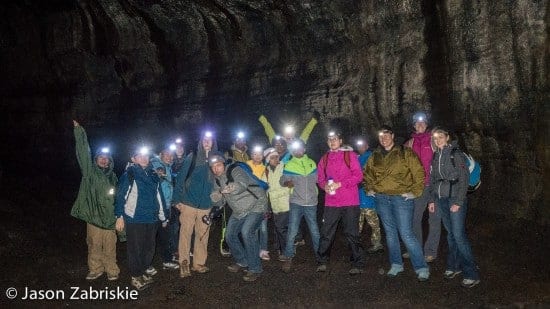
Kars4Kids: Seattle ICO is serving a wide age range (8-20). What would be a typical field trip for an 8 year-old hiking novice?
Kirsten Gardner: 8 year-olds are typically in 3rd grade and we try to incorporate a lot of play into these outings. Oftentimes the first one of the year is a corn maze hike plus a trip to a farm and pumpkin patch to pick a pumpkin for Halloween (a novelty for a lot of our students.) Hiking trips for 3rd graders might amount to 2-3 miles total with a lot of time being spent in free play at a destination like a lake, river, or open meadow.
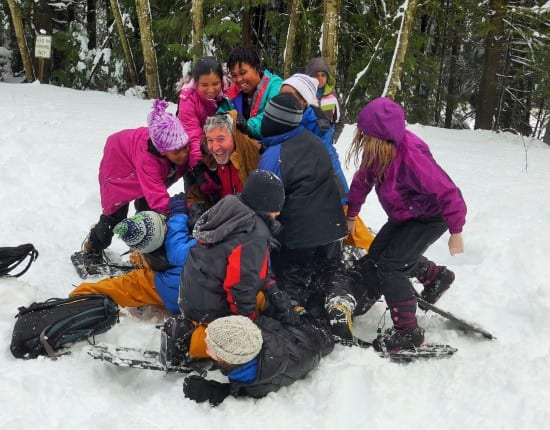
Kars4Kids: For the higher end of the age range you serve, what would be a typical field trip? How do the older youth end up in Seattle ICO? Is it a continuation of their time with you when they were younger? Or are they scholarship students in local colleges?
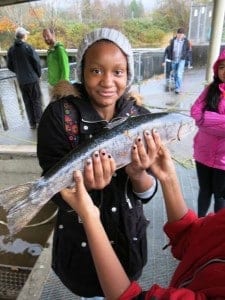
Kirsten Gardner Our trips stop at 12th grade and the older students (19 and 20 year-olds) are often recent arrivals from other countries that don’t have a comparable education system. Older kids tend to get more excited about the ‘glamorous’ trips like whitewater rafting, horseback riding, cross country skiing, backpacking and mountain biking but these are interspersed with lots of hiking trips. And frequently in order to participate in the big trip at the end of the year students need to have gone on at least 3 others throughout the school year. Many students find ICO in 3rd grade and continue attending outings until at least 8th grade if their school is a partner agency of ours.
Kars4Kids: What do the parents think of Seattle ICO? Do they see them as a nice freebie, or do most of them get why these field trips are so important?
Kirsten Gardner: I’m not sure…some parents write us thank-you notes and others we never meet to get a sense of how they view the trips. One child’s father owns a popular Nepalese restaurant and extends a discount to all of our volunteers who go in to dine, which is an incredibly kind gesture.
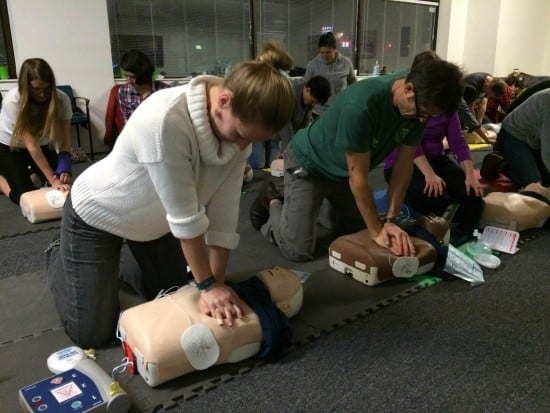
Kars4Kids: How many volunteers do you have at present? Tell me about the training they receive. What drives a person to volunteer with Seattle ICO?
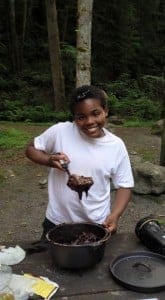
Kirsten Gardner: We currently have 111 active volunteers. We hold a weekend-long new leader training (NLT) event at the start of each September and spend the weekend teaching games, strategies for working with youth in a variety of scenarios, CARP (Child Abuse Recognition and Prevention), how to plan and lead an outing and protocol for certain incidents that could arise on a trip. Volunteers also must be CPR and First Aid certified (we hold one training session for 25 volunteers once per year) and must be Sierra Club members. Active volunteers are required to attend NLT once every 5 years as a refresher.
Volunteers are then assigned to a team which partners with a specific school and individual teams have their own further training methods—most of which involves pairing up new leaders with veterans to shadow all of the different ‘trip roles’—pulling gear, buying and prepping food, renting vans, planning and being the main logistical lead on an actual trip and cleaning and returning gear.
I can’t speak for everyone, but I think most of our volunteers have found something worthwhile and fulfilling in the outdoors and have a desire to share this with a population that may not have the same access or privileges to experience the outdoors on a regular basis. To quote a friend of mine, spending time in the mountains really helped me ‘find my voice’ and discover an inner strength and skill set that urban living hadn’t allowed me to see before. Motivation to share this with others, particularly impressionable youth, and to perhaps enable them to have their own similar self-discovery is what first drove me towards the organization.
